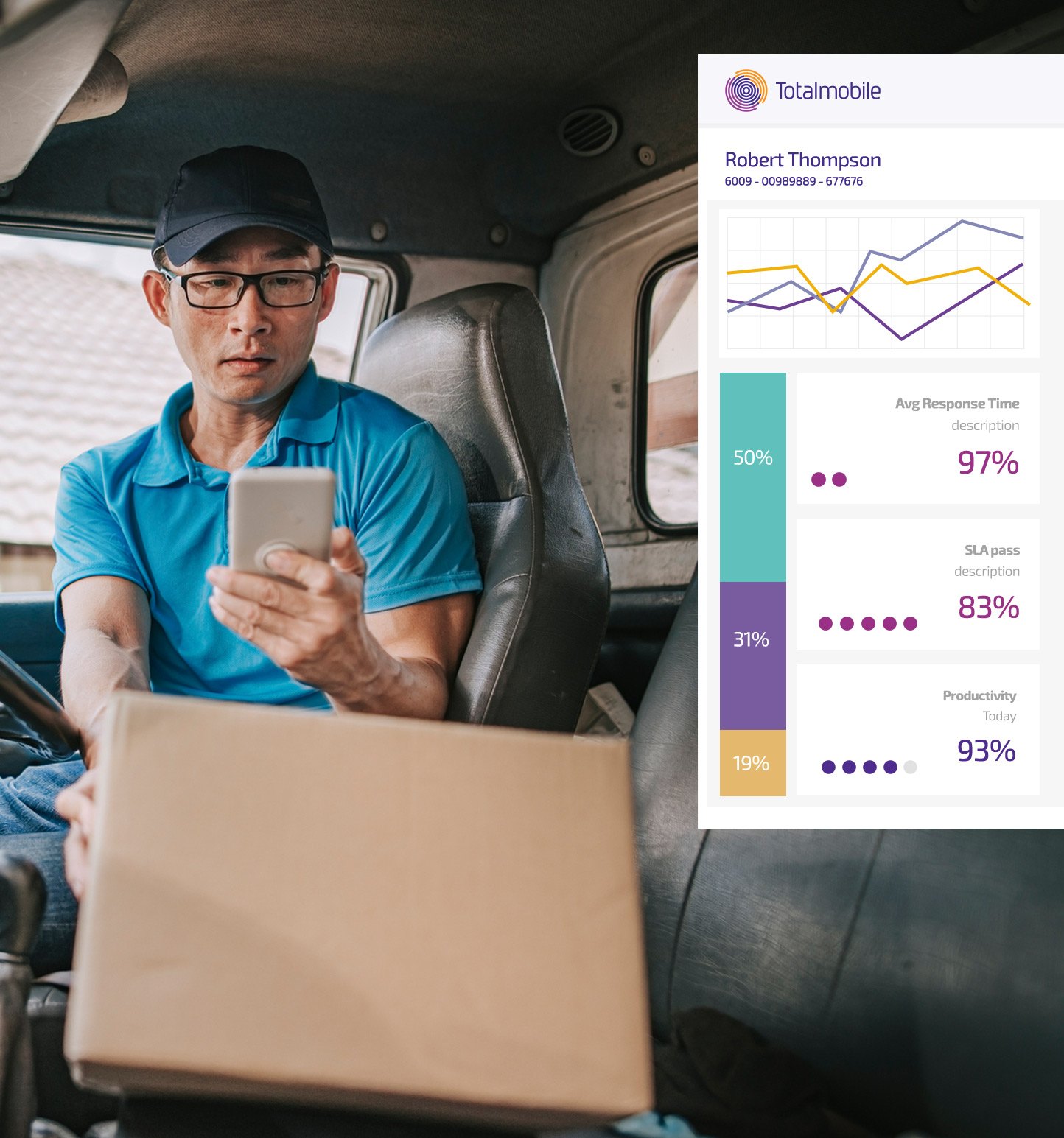What are KPIs for Field Service Technicians?
KPIs, or Key Performance Indicators, are crucial metrics used to evaluate the performance of field service technicians. These measurements are designed to assess how effectively technicians are meeting their objectives and highlight areas where improvements can be made. By tracking KPIs, service organisations can ensure their technicians are performing at their best, ultimately leading to enhanced service delivery and customer satisfaction.
Introduction to KPIs for Field Service Technicians
Data reigns supreme in field service management. It guides decisions, shapes strategies, and provides a clear picture of operational success or areas in need of improvement. Few data types are as vital to field service success as your Key Performance Indicators (KPIs).
Key Performance Indicators (KPIs) are vital metrics that track operational health and field service engineer effectiveness. They help inform decision making, helping efficiency, customer satisfaction and business growth. But not all metrics are created equal. With the vast array of data points to choose from, identifying the KPIs that truly matter becomes a critical task.
The Importance of Selective Measurement
The reality is, while you could measure every corner of your field operations, such an approach is simply impractical. The art of KPIs lies in finding those metrics which are useful. Useful field service industry metrics are those that offer insights leading to actionable steps and measurable growth.
This is easier said than done, and often means asking some tough questions:
- Which areas of your business have the most significant impact on your bottom line?
- What metrics align with your company’s goals and growth trajectory?
- How do these KPIs tie back to individual and field service team performances?
By focusing on the right KPIs, you can steer your operations towards reduced costs, improved service quality, and higher customer retention.
But what are these elusive KPIs? How can you optimise them to drive your field service operations towards excellence? Join us as we explore the KPIs standing as pillars of successful field service management.
Field Service KPIs Explained
In field service management, KPIs are quantifiable measures of service performance and operational health. They provide visibility on service quality, resource allocation effectiveness, and customer satisfaction. In field service, we can group KPIs into several focused categories.
Service managers can identify strengths and areas for improvement by understanding and monitoring KPI groups. This empowers them to make informed decisions.
The Importance of KPIs in Field Service
KPIs for field service engineers are more than just numbers on a dashboard; they are vital tools that drive strategic decisions and operational improvements. Here’s why:
Top 10 KPIs for Field Service Technicians
Effective management of field service operations relies on tracking and improving several key performance indicators. Each KPI offers unique insights into the efficiency and effectiveness of the service provided. Here’s a breakdown of our top 10 essential KPIs for field service technicians:
1. First-time Fix Rate
Description: The First-Time Fix Rate Measures the percentage of issues resolved on the first visit without the need for a follow-up. A high first-time fix rate reduces costs, increases customer satisfaction, and improves operational efficiency. FTFR is the cornerstone of many service-level agreements in field service.
2. Mean Time to Repair (MTTR)
Description: The average amount of time it takes to resolve a reported problem. A lower MTTR indicates more efficient problem resolution and less downtime for customers, enhancing service reliability.
3. Response Time
Description: The time elapsed between a customer making a service request and a technician beginning work on that request. Faster response times can lead to higher customer satisfaction and can differentiate a service provider in competitive markets.
4. Customer Satisfaction Score (CSAT)
Description: A measure of how satisfied customers are with the service they received, often obtained through customer surveys post-service. Your C-SAT score relates to customer retention rates, brand reputation, and can influence future sales. In the utilities space, this metric is vital to operational licenses.
5. Average Work Order Completion Time
Description: The average time taken to complete a work order from start to finish. This KPIs indicates process efficiency and affects overall productivity and customer satisfaction.
Top 10 KPIs for Field Service Technicians (contd.)
6. Technician Utilisation Rate
Description: The ratio of billable technician hours to total working hours. Higher utilisation rates indicate efficient use of technician time and resources, leading to better profitability.
7. Parts Consumption Rate
Description: Tracks the rate at which parts are used for repairs and maintenance. This KPI helps manage inventory more effectively, reducing costs and ensuring parts availability for critical repairs.
8. Travel Distance/Time
Description: Measures the distance and time technicians travel to reach service locations. Optimising travel time can reduce fuel costs and non-billable hours, increasing overall efficiency.
9. Safety Incidents
Description: Records the number of safety-related incidents that occur, such as accidents or injuries. Low numbers are indicative of better safety practices, which protect employees and reduce liability and insurance costs.
10. Training Hours Completed
Description: The total hours of training that technicians have completed over a specific period. Continuous training ensures technicians are up to date with the latest skills and technologies, improving service quality and adaptation to new challenges.
How to Implement KPIs Effectively
Implementing KPIs effectively is crucial for maximizing their benefits in field service management. Here are steps to ensure that your KPI implementation drives meaningful improvements:
Field Service Intelligence Software
Integrating effective Key Performance Indicators (KPIs) into your field service management strategy is crucial for continuous improvement and operational success. One powerful tool to facilitate this is field service analytics software like Totalmobile’s Field Service Intelligence. This solution provides a real-time understanding of service delivery, empowering service organisations to gain comprehensive insights into past, present, and future operations.
Implementing KPIs through a sophisticated field service intelligence tool ensures that your field service management is not just reactive but also strategic and forward-thinking. By harnessing the power of field service analytics software, organisations can transform their service delivery, enhance operational efficiency, and significantly improve customer satisfaction.
Closing Thoughts
As we’ve explored, KPIs are not just indicators of performance. They are fundamental tools for strategic decision-making and operational improvement in field service management. From improving response times to enhancing technician efficiency, each KPI holds the potential to offer deep insights into your service operations.
Remember, the key to leveraging the full power of KPIs lies in continuous monitoring, regular feedback, and consistent alignment with evolving business goals. By staying committed to these principles, you can not only meet but exceed their operational goals. Having the right KPIs makes it easier to achieve operational excellence. And this keeps everyone happy.

Frequently Asked Questions | KPIs for Field Service Technicians
What are the 3 most relevant KPIs in the field service industry?
The three most relevant KPIs in the field service industry are:
- First-Time Fix Rate (FTFR): This KPI measures the percentage of service issues resolved on the first visit. A high FTF rate indicates efficient and effective service delivery, leading to higher customer satisfaction and lower operational costs.
- Customer Satisfaction Score (CSAT): This metric reflects the level of satisfaction customers have with the service they received. High CSAT scores are crucial for customer retention and positive brand reputation.
- Mean Time to Repair (MTTR): This KPI tracks the average time taken to resolve a service issue. Lower MTTR values indicate faster resolution times, which can enhance customer satisfaction and reduce downtime.
What is the most important key performance indicator for field service technicians?
The most important key performance indicator for field service technicians is the First-Time Fix Rate (FTFR). This metric directly measures a technician’s ability to resolve issues during the initial visit. A high FTF rate not only signifies technical proficiency and preparedness but also leads to greater customer satisfaction, reduced costs from follow-up visits, and improved overall operational efficiency. Focusing on improving FTFR rates can significantly enhance the quality and reliability of field service operations. Learn More: What is First Time Fix Rate?











